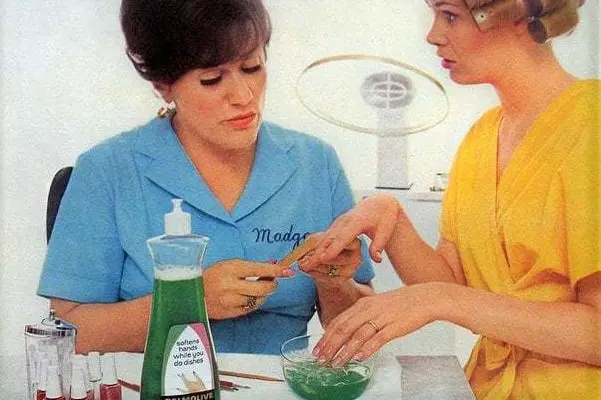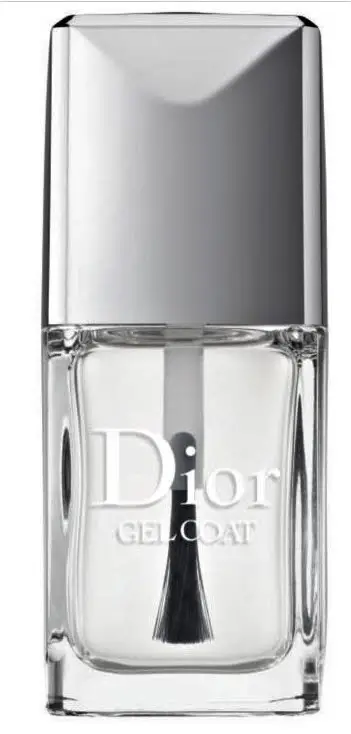
Our hands are always on display, an intrinsic hint of who we are. This is even more so during the holidays. We’ll be greeting guests, unwrapping gifts, holding a wine glass or a mug of eggnog, serving goodies, expressing stories using our hands, and waving our goodbyes. The way we care and polish our nails—or not—reflects our personality, health and well-being. And is there anything that makes hands feel more attractive than a fresh manicure?
Manicure/pedicure salons are everywhere. According to the latest report by Transparency Market Research, the global nail care market is expected to witness steady growth, reaching US $11,998.1 million in revenue by the end of 2022.
Years ago, there was only one type of manicure or pedicure, the traditional or classic one. It wasn’t a complicated routine: hands soak in warm water, cuticles are pushed back, nails are dried, and then comes a base coat, a carefully selected color of nail polish, and a top coat to achieve the finished look–ten beautifully groomed, shining fingertips that would last for about two to three days. That was the average time you could count on without chipping your polish.
Today there are many manicure techniques that go well beyond the traditional—some of them even claiming chip-free nail polish for up to a month. That must come with a price, you say, both to your budget and to your nails. And you would be right. Not only are these newer options harder on your nails but our nails aren’t as healthy as they were when we were younger.
How do you decide on the best manicure option, what are the pros and cons and which are best for the type of nails you have? First, let’s look at what’s happening to our nails as we age.
_________________________________________________________
_________________________________________________________
How our nails change as we age
According to Sharon Basaraba in “The Long and Short of Aging Nails”, fingernails are a window to your health. “It’s been said that nails are a barometer of your overall health, and that is certainly true even when your condition is simply getting older,” Basaraba explains. “Like hair, nails undergo changes over time, due to disease, internal processes in the body as it ages, nutritional deficiencies, or external factors like long-term exposure to chemicals or ultraviolet light.”
Changes in your nails may involve changes in how fast they grow, texture, thickness, shape or contour, and color. Some of these changes include slower nail growth, brittle nails more prone to breakage, thickening (typically toe nails) and thinning (typically finger nails) or a change of color to a more yellow or gray tone. While most changes are natural, some can signal health concerns, especially changes in nail color and growth patterns.
Nail artist, educator and beauty expert Hillary Fry explains aging nails like this: “As we age, our nails are most commonly affected by dehydration. The body slows down the production/retention of oils and moisture. We have around 100 layers to our nail plate, and as they dry out, they tend to split, peel, chip and ridge. This damage is exacerbated by seasonal changes as well.”
_________________________________________________________
_________________________________________________________
All manicures are not created equal
Before we consider various types of manicures, it goes without saying that we all want a manicure that remains chip-free as long as possible. Chipping is the major drawback of the traditional or classic manicure. But beyond that, it does not have any real health detriments. “Most of the nasty chemicals have been removed from nail polish, so you can now wear it for longer periods of time without causing damage,” says Mavala nail expert Lynn Gray. Gray recommends removing your polish at least every seven days with a non-acetone remover, as acetone can be very dehydrating to the nail plate, causing flaking and weakness. There are many non-acetone polish removers to choose from. So if you remember to remove and reapply your nail polish each week, there are virtually no health concerns associated with a traditional manicure. Unfortunately this isn’t the case for other options.
Trade-offs of various manicure styles
Acrylic Nails
Acrylic nails are fake nails that create a hard protective layer over your natural nails. They are a mix of powder and liquid monomer that’s combined into a dough that’s shaped onto your nails with a brush, and then air-dried. “Acrylics do not require a lamp to cure, and they’re great for changing the shape or extending your nails,” says Ariela Zuniga, director of operations at Vanity Projects, a high-end nail salon with locations in New York and Miami. According to Zuniga, acrylics are ideal for people looking to change the shape of their nails, or want more length.
Acrylic is transparent and a nail polish is painted over them. Acrylic nails are virtually indestructible and last until your nail grows out. The big drawback to acrylics is that the application process involves chemicals and fumes. Removal involves soaking in acetone for approximately ten minutes, a process that can damage the nail bed and cause excruciating pain if you have any hangnails or paper cuts.
Gelnails
Like acrylics, gel nails are fake nails but they tend to look more natural. If the length of the nail needs to be extended, a nail tip is first applied to lengthen the nail. Then two to three layers of gel nail polish are applied with each layer being “cured” using a UV lamp. The nail is then filed and polished with the desired color. Like acrylics, gel nails have a downside. For starters, they are more expensive, costing between $25 and $60 per session with nail extensions costing considerably more. Because UV light is involved, there is a concern that this exposure to UV light could increase the risk of skin cancer. Ironically, we get acrylic and gel nails to make our nails longer and stronger but, ultimately, these processes actually weaken our nails.
Shellac nails
Shellac is a blend of gel and nail polish. Because it is like a polish, it can’t be used to extend nail length. Because it is like a gel, however, it adds strength and durability. It takes less time to apply than gel nails and it is not as expensive. However, since shellac nails are still “cured” under a UV light (although for less time than gels), the same risks of exposure to UV light apply.
_________________________________________________________
_________________________________________________________
Dip powder nails
This process has been around for a while but has experienced a resurgence because it doesn’t require UV light to harden the nails and nails remain chip-free for about two weeks. The process is relatively simple: the manicurist starts by buffing the surface of the nails, applies a primer coat and a base, and then dips nails one by one into a pigmented dip powder. Each finger is dipped twice (so that each nail gets two coats of powder), then the excess powder is brushed off and the nail is painted with a sealing top coat. Alas, dipping powder isn’t the healthiest choice for your nails. Popular nail salons like Vanity Projects and Van Court won’t include the technique on their menus. “It’s a very cheap product, oftentimes containing MMD, which is extremely harmful to natural nails and banned in NYC,” says Ariela Zuniga, of Vanity Projects. Ruth Kallens, founder and partner at Van Court, says, “Dip powders are acrylic. I don’t use acrylic because the removal process is so detrimental to your nail plate.”
Dr. Dana Stern, a New York City dermatologist and nail specialist, has this to say about the process: “Keeping the nails covered for long periods of time is not healthy. And it’s not because your nails need to breathe. The nail is a window into our health and so covering the nail hinders the potential ability to see if there is an issue going on.” Dr. Stern continues,”Sometimes people intentionally cover an ugly nail abnormality in order to cosmetically camouflage it.” Recalling an instance from earlier in her career, Dr. Stern relates how a young woman in her 20s came into the clinic with “advanced nail melanoma” that she had been covering with an acrylic.
_________________________________________________________
_________________________________________________________
The fine balance between beauty and health
A preference for nail products that are less toxic, long lasting and healthy is growing with consumers opting to pay more for quality. The demand for organic products is also rising as is the market for supplements and vitamins to enhance nail health. While there is still a decision to be made between a long-lasting manicure and possible damage to your nails, research is underway so that one day we can expect to have it all–a long-lasting, nail-healthy manicure.
A chipped, short-lived manicure is far better than a toxic one
So what can you do to make your nails look their best without putting them or your health at risk? We recommend going with a traditional or classic manicure since our nails are generally more vulnerable now—they’re drier, more brittle and thin and any removal that involves chemicals will take off a layer of nail. Just be sure to select products that will help your polish last longer. We have searched websites, read reviews and consulted expert opinions to come up with these five nail products that promise chip-free nails beyond the three day average.
Sally Hansen Hard as Nails Xtreme Wear, Invisible

A top coat that promises high shine and long wear.
“No peeling or retouch for seven days.”
Pure Ice Girl on the Run topcoat
Sets nail color fast—a quick swipe creates a hard protective surface resistant to chipping. And this much-loved top coat costs less than $2.00 at Wal-Mart.
“It has been 6 days now and it is still on.”
Wet n wild Shine Protective Base Coat
The company touts this inexpensive base coat as the #1 selling nail polish on the market and maintains that it is “3-Free”, meaning that it has no formaldehyde, toluene, or phthalates.
“I can EASILY get 7-9 days with no chipping at all if I apply this as a top coat every 2-3 days.”
Dior Top Coat
This is an expensive top coat but nail aficionados swear that it keeps their polish on much longer than the three-day average, dries quickly and imparts a beautiful sheen.
“Makes my polish last longer than any other topcoat I’ve used”
Wet n wild Shine Matte Top Coat
You won’t get shine with this drug store staple but you’ll get beautifully smooth satin nails that outlast the average.
“For 99 cents this stuff does the job just as well as its more expensive counterparts.”
You might also like…
Go to the Blue Hare home page to discover more articles for fabulous women.


